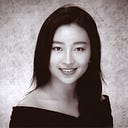Booklet
OTL AICHER (1922–1991)
How I approached telling the story of my design hero, Otl Aicher, in the form of a 16-page print booklet.
Looking at the project brief, I asked…
What story do I want to tell?
What kind of assets will I be using?
How do I engage and captivate my reader given Aicher’s use of flat graphics and extensive work in corporate branding?
Although I’m confident that my designer’s life and design career were rich enough to fill 16 pages and more, what’s intimidating was the task to identify which works are most important to talk about while considering which would complement each other best in a cohesive booklet.
Content Distribution
Similar to the way I approached my informational poster, I broke down my designer into potential themes in hopes for visual inspiration to follow. I also knew it was important to have recurring elements that tie the spreads together into one cohesive narrative. This wasn’t technically a requirement for the project, but based on my research on Otl Aicher, his life and its relationship to his work rely on each other and have the potential to tell a powerful story.
Revisted my essay, moodboard, poster iterations, and past sketches
- booklet approaches
[3/11] Sketches
- struggled with content distribution
- doing low fidelity content distribution sketches helped me layout visuals
2 flatplans:
Feedback:
Prototyping Sketches
- cover iterations
Iteration 1
- incorporating pictures
Feedback (+ my thoughts):
- Solid color fill on entire page vs. white negative space is a simple system (I had low confidence that this was an interesting and engaging way of going about my booklet but it’s comforting to know that it is a worthy direction to pursue)
- Can refine page fill vs. no page fill system
Next step:
- continue devleoping iterations for each layout
- make layout system (one side solid one side white) look more cohesive
— -
Moving forward, I still felt that I had to develop each of my spreads to a greater level of detail and consideration of the grander narrative.
Brett feedback:
- find ways to include artifacts: contrast between flat graphics and artifacts are nice
- —
What I did:
Iteration 2
Printing out the entire booklet:
- more sensitive to color and how it ads a lot more interest than white space
- cover is too plain
- large graphics look too large and simple, need to add more complexity or scale down
Jaclyn Feedback:
- Cover: monochromatic treatment doesn’t stand out, try to contrast against TOC, can try playing with dramatic scale
- TOC: both ideas are nice but hurdles might be better bc non-portrait large picture is misleading
- Corporate Branding: try incorporating another color, has the effect of a B/W spread bc it’s only navy + yellow, only use white on blue for body
- Olympics 1: large icon looks too simple, add more complexity, not sure if pull quote legibility is working too — try being more experimental with type, see if you can remove title/make it look mroe intentional
- Olympics 2: artifacts are small
- Other iterations: like the green spread (try for center spread?), like the zoomed out bicycle spread more than current large bicycle, timetable spread is nice (use scaled up artifacts)
- In general: try being more experimental with type (large type?), be careful with making icons large because they are very simple, include more artifacts, leverage interesting contrast between B/W and lots of color for an engaging reading experience
Iteration 3
TA/Class Feedback:
- Olympics 2 spread: too much spread, needs more neg. space, dog catches eye too much, make exposure and photo consistent for all artifacts
- Consider incorporating geometric man in all spreads
- Enjoy having each spread having different themes
- end spread doesn’t feel like an end spread — more quiet, white?
- early life spread: highlighting isn’t done anywhere else in booklet
- bring darker orange in other spreads to tie all colors together
- folio rectangles don’t need to all be different colors
- Father of the geometric man spread: consider replacing sketch with a photograph, unsure if it’s his work
- standardize use of light blue — make all one hex code
- rotis title type: make same size as other section titles or make more obviously different
- use less colors for body copy — stick with dark gray
- cover: thicker stroke around aicher looks unintentional, try using textures in lines like in the TOC, try connecting lines in TOC to cover, try using all blue monochrome
Prof Feedback:
- Cover: try switching geometric man with Aicher portrait (familiar and graphic can be more inviting)
- Emphasize hierarchical system more: play with more relative scale and distance between elements on the spread: lots of elements happening and not clear enough focus
- folio system is redundant, when used in conjunction with title: replace with booklet name? replace title with pull quote?
- big geometric folio shape makes sense
In general, having different themes or each spread is interesting in narrative-telling, but more can be done to establish a cohesive type system and a clearer sense of hierarchy. My previous concerns with incorporating artifacts seem to be resolved conceptually with this iteration. Colors can continue to be tweaked to encourage more cohesion and improve storytelling.
Brett feedback:
- What’s missing from spreads isn’t more images but a nice caption system — describe the images being used
- Push cover even more (too boring)
- although final spread may not feel as much like an ending with the bright orange wash, it is still a nice addition to the overall book experience — it’s not that important to have a very conclusion-feeling ending
— -
